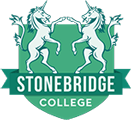Continuity and Change (Byte Size Skills Course).
Continuity and Change (Byte Size Skills Course)
In this Course, we consider change and transition and the reasons for this process of change, particularly as it affects the organisations and institutions of our society. If we were somehow transported in time back to the mid-nineteenth century, we know that many things would be unfamiliar, strange or unusual. While nineteenth-century Britain would be unmistakably "British", many things such as transport, patterns of behaviour and other structures and processes would be virtually unrecognisable.
Similarly, if we were projected into the twenty-third century, many of the current institutions, structures and processes with which we are familiar would have changed beyond all recognition or have ceased to exist altogether.
When you have completed this course, you should be able to understand why change occurs in a society and to illustrate the process of change by examples from trade unions and work organisations. You should also be able to appreciate the major change processes affecting organisations and society as well as being able to identify and explain "post-industrialism" and "post-modernism" as central concepts of change.
By the end of the course, you should be able to:
- define change.
- identify significant features of two theories of social change - social evolutionism and historical materialism.
- discuss and give examples of the influence upon social change of the physical environment, political organisation and cultural factors.
- describe the origins and implications of the "agency" and "structure" approaches of social change.
- indicate the limitations of both "agency" and "structure" approaches to social change and illustrate how the two can be seen as complementary.
- explain what we mean by a social movement and give examples of different types.
- discuss the features, development and dynamics of social movements and their relation to change with reference to the work of Smelser and Touraine.
- identify the features and dynamics of post-industrialism and discuss what evidence there is of change towards post-industrialism in current British society.
- identify some common features shown by post-Fordist manufacturing and marketing developments, and the cultural ideas and philosophy of post-modernism.
On completion of your course, you will receive a certificate:
Stonebridge Associated Colleges: Continuity and Change (Byte Size Skills Course) Certificate
Continuity and Change (Byte Size Skills Course) Certificate issued by Stonebridge Associated Colleges, to view a sample of the college’s award, please click here.
Professional Membership
On completion of this course you will be eligible to join the following Professional Associations(s):
On successful completion of your course your qualification is awarded. You will receive an attractively presented Diploma or Certificate issued by Stonebridge Associated Colleges, this will also allow you to use the letters SAC. Dip. or SAC. Cert. after your name.
Stonebridge Associated Colleges is one of the leading (and biggest) distance education colleges in the U.K and internationally. We have many thousands of students studying with us at any one time from locations all over the world. Our diplomas will always count towards your future, and will improve your prospects of future employment or higher level study etc. by proving that you have studied to a certain level, that you have proficiency in your chosen subjects and that you are interested in your field of choice. Education is always an investment in your future and you will find this to be the case with our qualifications in your jurisdiction.
There is no experience or previous qualifications required for enrolment on this course. It is available to all students, of all academic backgrounds.
All course fees, inclusive of all payment plans including our Premium Credit Limited option, must be settled before certification can be ordered.
*You will have access to the course for 24 months.
Introduction
Objectives
Section 1: Change
Defining change
Theories of social change
Influences on change
Change in the recent past
Section 2: Action versus Structure
Agency or structure: the essential question
The first image of society
The second image of society
Summary propositions
Section 3: Social Movements: an Introduction
Definition
Classifying social movements
Theories of social movements
Structural and social action approaches
Some conclusions
Section 4: From Industrialism to Post-Industrialism
Directions of change
From industrialism to post-industrialism and beyond
Contributions of Castells and Gorz
Post-industrialism: conclusions
Section 5: From Modernity to Post-Modernity
Modernism
Post-modernism
Post-Fordism and post-modernism
Summary
Tutor-marked Question Paper
Basic premises
Assessment Method
After each lesson there will be a question paper, which needs to be completed and submitted to your personal tutor for marking. This method of continual assessment ensures that your personal tutor can consistently monitor your progress and provide you with assistance throughout the duration of the course.
What's Included
- All study materials
- Study Guide
- Full Tutor and Admin support
What's Included
- All study materials
- Study Guide
- Full Tutor and Admin support
In this Course, we consider change and transition and the reasons for this process of change, particularly as it affects the organisations and institutions of our society. If we were somehow transported in time back to the mid-nineteenth century, we know that many things would be unfamiliar, strange or unusual. While nineteenth-century Britain would be unmistakably "British", many things such as transport, patterns of behaviour and other structures and processes would be virtually unrecognisable.
Similarly, if we were projected into the twenty-third century, many of the current institutions, structures and processes with which we are familiar would have changed beyond all recognition or have ceased to exist altogether.
When you have completed this course, you should be able to understand why change occurs in a society and to illustrate the process of change by examples from trade unions and work organisations. You should also be able to appreciate the major change processes affecting organisations and society as well as being able to identify and explain "post-industrialism" and "post-modernism" as central concepts of change.
By the end of the course, you should be able to:
- define change.
- identify significant features of two theories of social change - social evolutionism and historical materialism.
- discuss and give examples of the influence upon social change of the physical environment, political organisation and cultural factors.
- describe the origins and implications of the "agency" and "structure" approaches of social change.
- indicate the limitations of both "agency" and "structure" approaches to social change and illustrate how the two can be seen as complementary.
- explain what we mean by a social movement and give examples of different types.
- discuss the features, development and dynamics of social movements and their relation to change with reference to the work of Smelser and Touraine.
- identify the features and dynamics of post-industrialism and discuss what evidence there is of change towards post-industrialism in current British society.
- identify some common features shown by post-Fordist manufacturing and marketing developments, and the cultural ideas and philosophy of post-modernism.
On completion of your course, you will receive a certificate:
Stonebridge Associated Colleges: Continuity and Change (Byte Size Skills Course) Certificate
Continuity and Change (Byte Size Skills Course) Certificate issued by Stonebridge Associated Colleges, to view a sample of the college’s award, please click here.
Professional Membership
On completion of this course you will be eligible to join the following Professional Associations(s):
On successful completion of your course your qualification is awarded. You will receive an attractively presented Diploma or Certificate issued by Stonebridge Associated Colleges, this will also allow you to use the letters SAC. Dip. or SAC. Cert. after your name.
Stonebridge Associated Colleges is one of the leading (and biggest) distance education colleges in the U.K and internationally. We have many thousands of students studying with us at any one time from locations all over the world. Our diplomas will always count towards your future, and will improve your prospects of future employment or higher level study etc. by proving that you have studied to a certain level, that you have proficiency in your chosen subjects and that you are interested in your field of choice. Education is always an investment in your future and you will find this to be the case with our qualifications in your jurisdiction.
Introduction
Objectives
Section 1: Change
Defining change
Theories of social change
Influences on change
Change in the recent past
Section 2: Action versus Structure
Agency or structure: the essential question
The first image of society
The second image of society
Summary propositions
Section 3: Social Movements: an Introduction
Definition
Classifying social movements
Theories of social movements
Structural and social action approaches
Some conclusions
Section 4: From Industrialism to Post-Industrialism
Directions of change
From industrialism to post-industrialism and beyond
Contributions of Castells and Gorz
Post-industrialism: conclusions
Section 5: From Modernity to Post-Modernity
Modernism
Post-modernism
Post-Fordism and post-modernism
Summary
Tutor-marked Question Paper
Basic premises
Assessment Method
After each lesson there will be a question paper, which needs to be completed and submitted to your personal tutor for marking. This method of continual assessment ensures that your personal tutor can consistently monitor your progress and provide you with assistance throughout the duration of the course.
What's Included
- All study materials
- Study Guide
- Full Tutor and Admin support
What's Included
- All study materials
- Study Guide
- Full Tutor and Admin support
Our Advisors.
Our team of course advisors are keen to help.
Call us now on 0121 392 8288
Alternatively, please complete the form below and we’ll get back to you as soon as possible.
80,000 learners.
650 courses.
flexible payment
options.
Our student support team is here for you.























